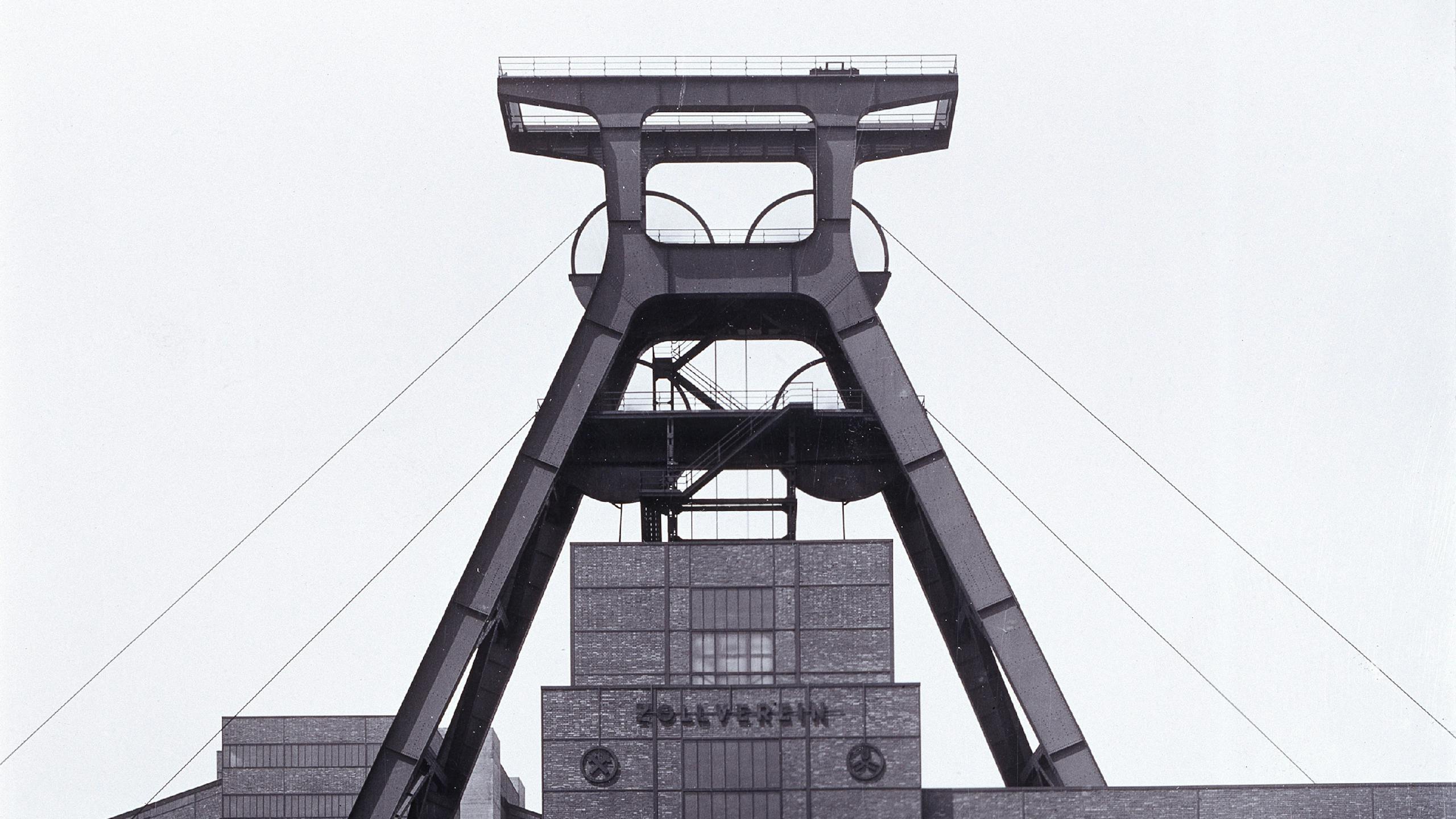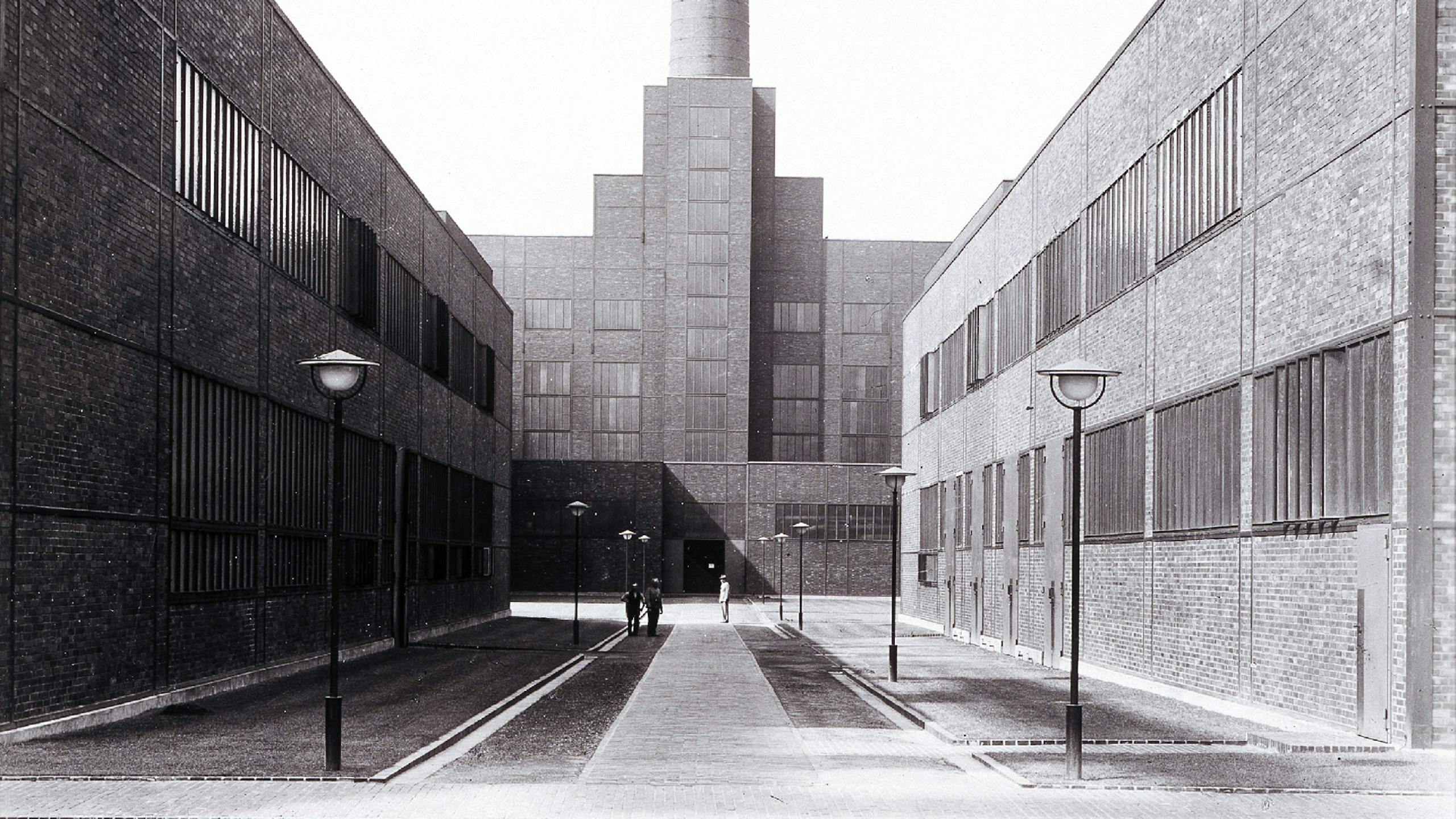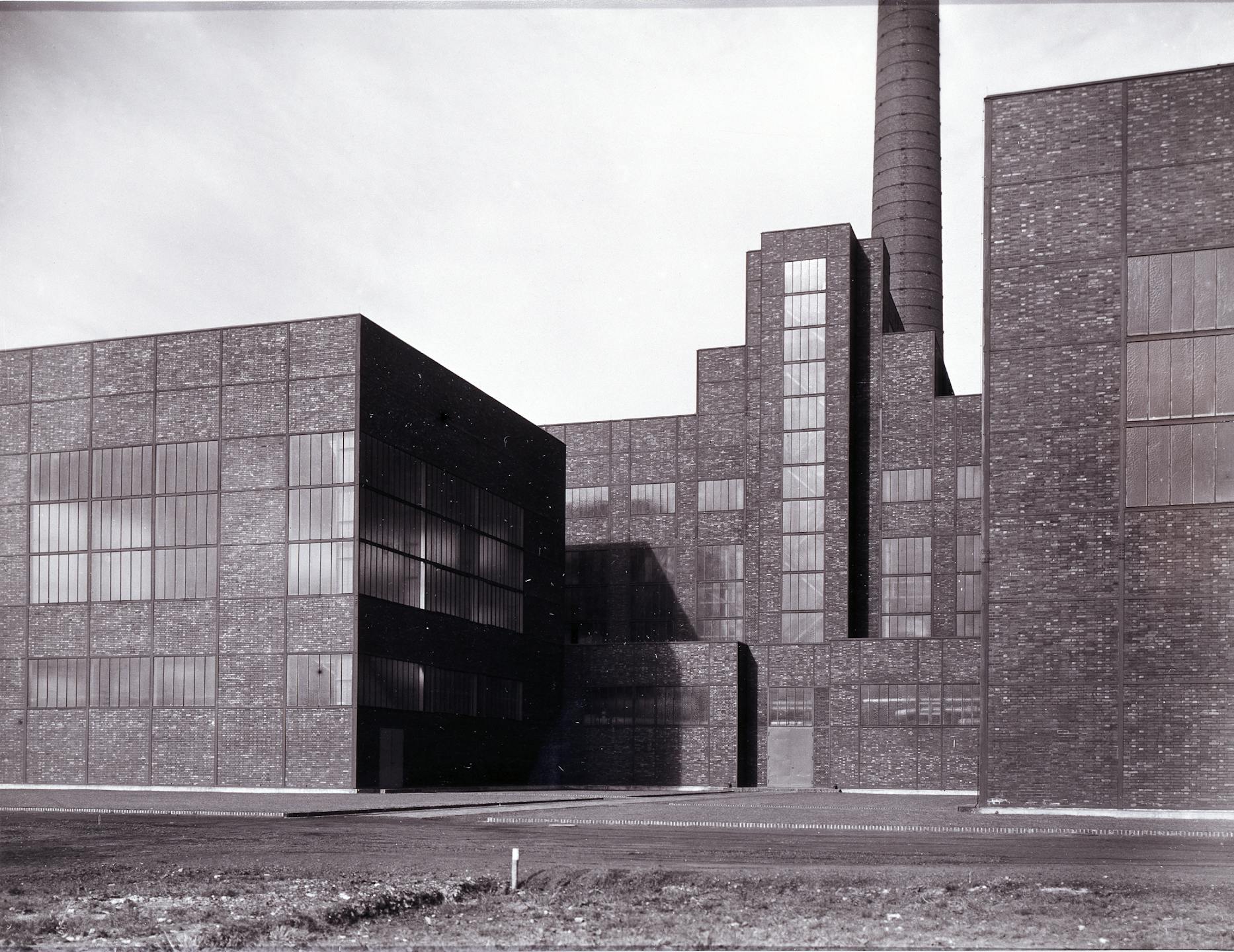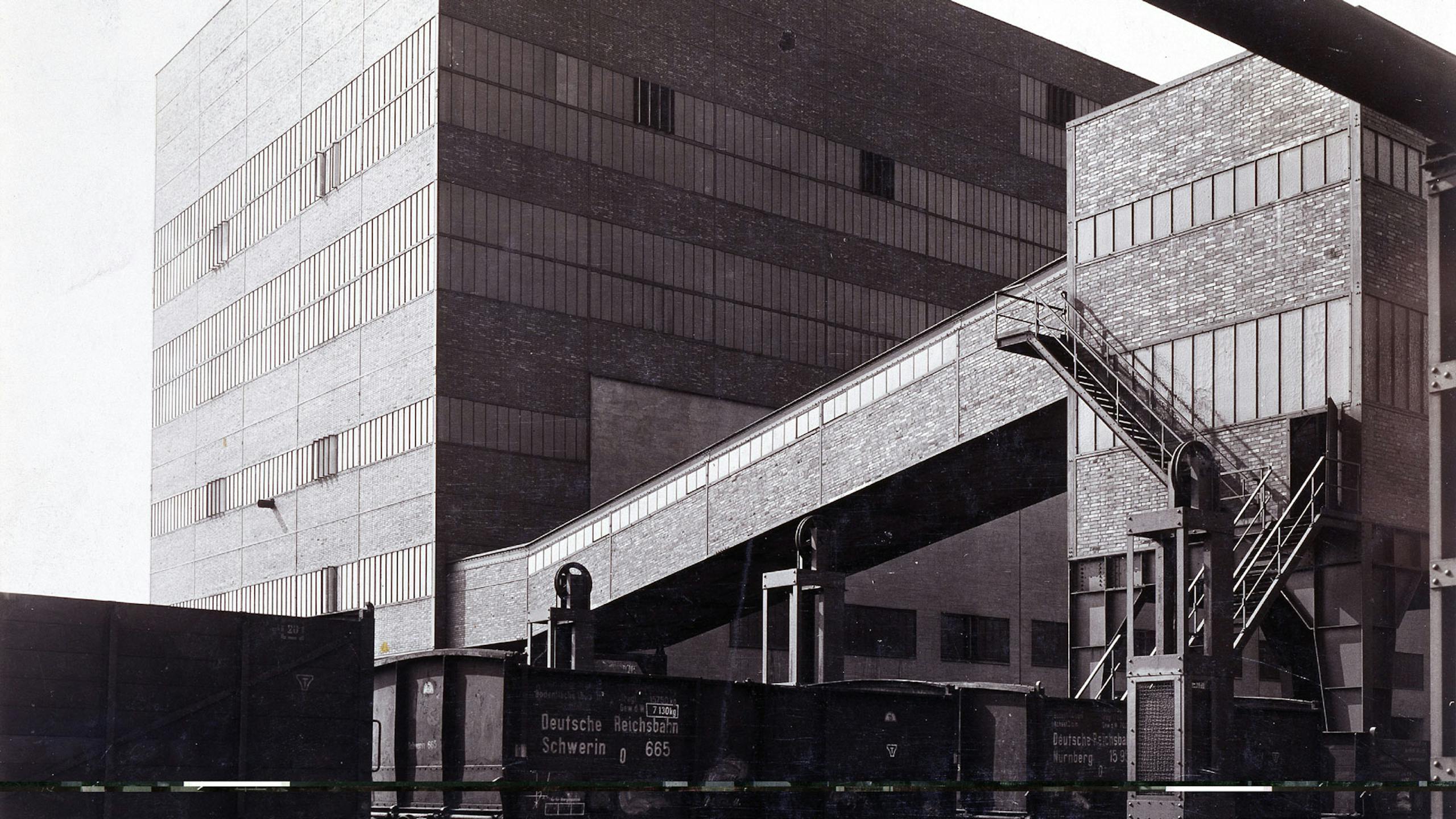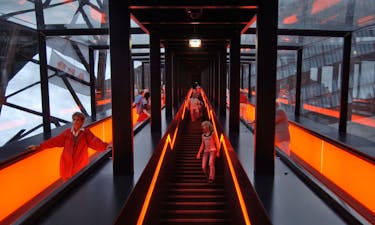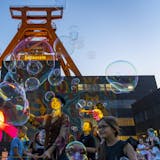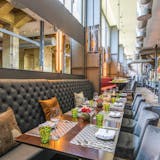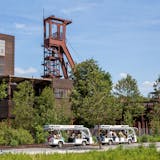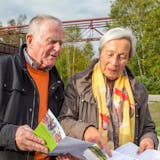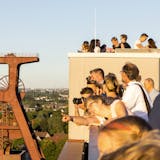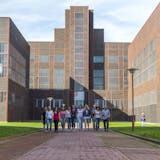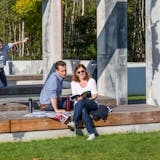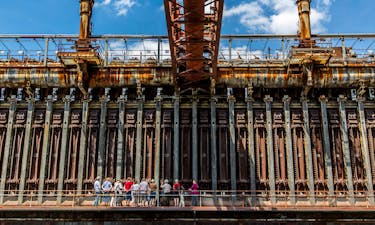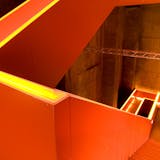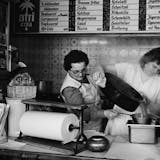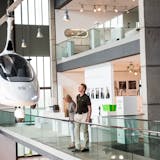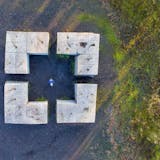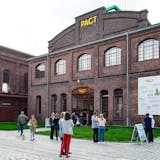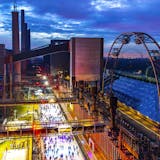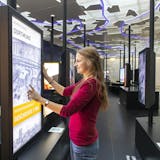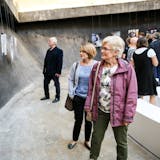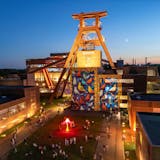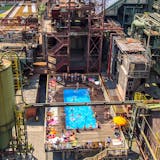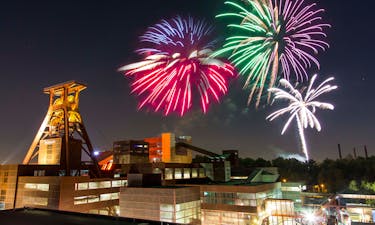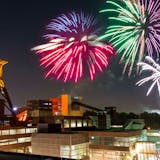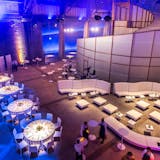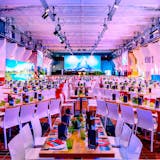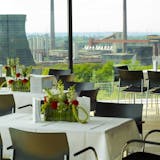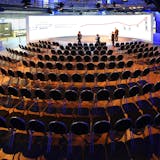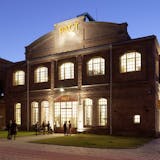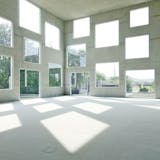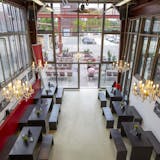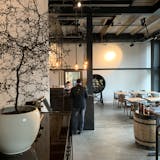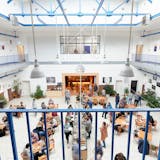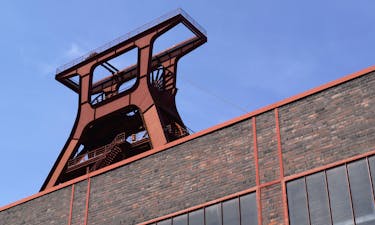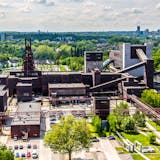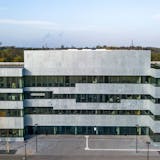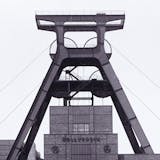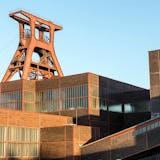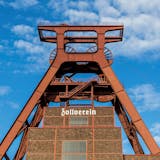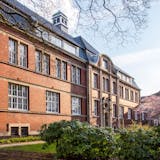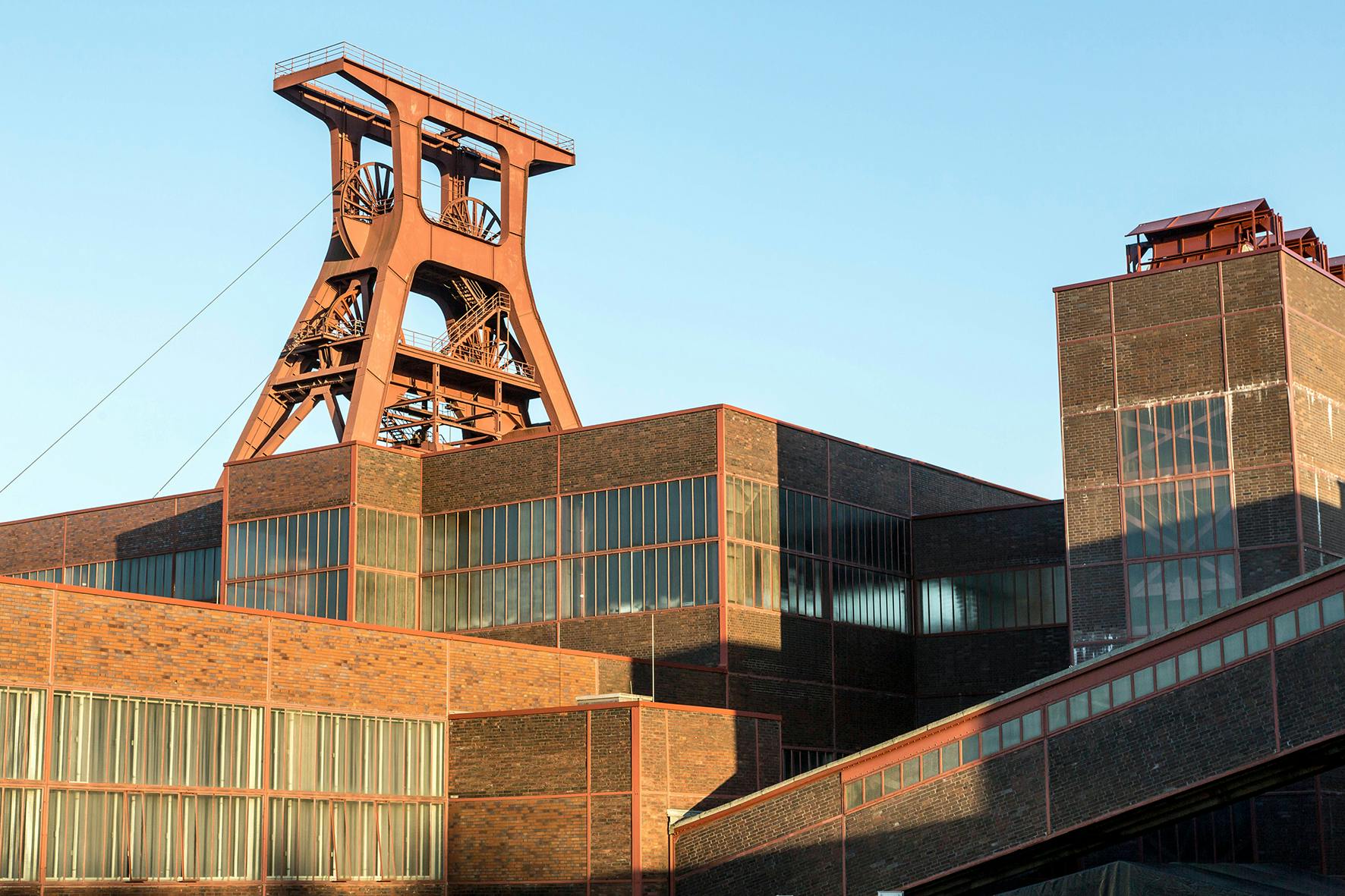
Bauhaus at Zollverein
Modern architecture
"Bauhaus 100" – the anniversary at the World Heritage Site
The Zollverein Coal Mine and Coking Plant was included in the UNESCO World Heritage List on 14 December 2001 as the „Zollverein Coal Mine Industrial Complex“. Since then, the former industrial plant has officially been one of the world’s most important cultural assets. In its assessment, UNESCO stated two central criteria for its decision: „The Zollverein Coal Mine Industrial Complex in Essen is an exceptional industrial monument by virtue of the fact that its buildings are outstanding examples of the application of the design concepts of the Modern Movement in architecture in a wholly industrial context. The technological and other structures of Zollverein XII are representative of a crucial period in the development of traditional heavy industries in Europe, which were reinforced through the parallel development and application of Modern Movement architectural designs of outstanding quality.“
Designed down to the details of lamps, stair railings, and door handles, the completely preserved complex of the Zollverein Coal Mine and Coking Plant is a total work of art and represents the social, economic, aesthetic, and industrial history of the coal and steel age in exemplary fashion.

Independent variant of the Bauhaus concept
The symmetrical arrangement of the buildings along two visual axes is still impressive today. The 20 individual buildings illustrate the technical work and production processes of coal mining, according to the Bauhaus maxim that form has to be determined by function. This functional principle, based on the efficiency idea of „form follows function“, connects Zollverein with the forward-looking visions of the Bauhaus era in the 1920s, which ultimately also became the breeding ground for modernism in the Ruhr area, the industrial West.
In this respect, the steel framework architecture in the style of New Objectivity at Zollverein’s Shaft XII, which went into operation in 1932, and at the Zollverein Coking Plant, which was built in the 1950s using the same design vocabulary, represents an independent variant of the Bauhaus concept. It is an expression of the close connection between industrial design and architecture, influenced the industrial architecture of future generations, and already earned Zollverein its reputation as the „most beautiful“ coal mine in the world at the time of its operation.
Special guided tour in the Bauhaus year
This outstanding universal value (OUV), which was emphasised by UNESCO, is a central component of all guided tours on the Zollverein World Heritage Sites. The guided tour „Zollverein Architecture Yesterday and Today“ focuses particularly on this aspect: it places Fritz Schupp’s and Martin Kremmer’s Bauhaus-influenced architecture in the style of New Objectivity in the context of modern architecture and at the same time explores its influence on the Zollverein architecture.
Exhibition on the Margarethenhöhe artists’ colony
1919 marks the 100th anniversary of the founding of the so-called „Kleines Atelierhaus“ at the Margarethenhöhe in Essen, which Margarethe Krupp, the founder of the garden city, had built for the artist Hermann Kätelhön. It was the nucleus of an artistic circle that established itself at Margarethenhöhe in the following years. In addition to Kätelhön, it included the sculptors Joseph Enseling, Will Lammert, and Richard Malin, the painters Kurt Lewy, Gustav Dahler, Josef Albert Benkert as well as Philipp and Hermann Schardt, the goldsmith Elisabeth Treskow, the bookbinder Frida Schoy, and the photographer Albert Renger-Patzsch. They created an artists‘ colony in the middle of the Ruhr area, which dealt with the artistic and handcrafted production in the industrial region along the rivers Rhine and Ruhr.
The exhibition „Aufbruch im Westen. Die Künstlersiedlung Margarethenhöhe“ (Awakening in the West. The Margarethenhöhe Artists‘ Colony), which is on display at the Ruhr Museum from April 15, 2019 to January 5, 2020, features more than 600 exhibits illustrating the involvement of the group of artists in the cultural awakening of the industrial region in the 1920s. It tells of the construction of the estate, the communal life of the artists, and the work of this artists‘ colony in West Germany.
„Try again, fail again, fail better – IMPULS BAUHAUS“ festival
Folkwang University of the Arts presents the „Try again, fail again, fail better – IMPULS BAUHAUS “ festival in the Bauhaus year in cooperation with the Ruhr Museum, Stiftung Zollverein, Museum Folkwang, and Klassik Stiftung Weimar. International artists work together with students and teachers of the Folkwang University of the Arts under the artistic direction of Professor Elke Seeger and Fabian Lasarzik on four Bauhaus design concepts: light, body, functionality, and space.
